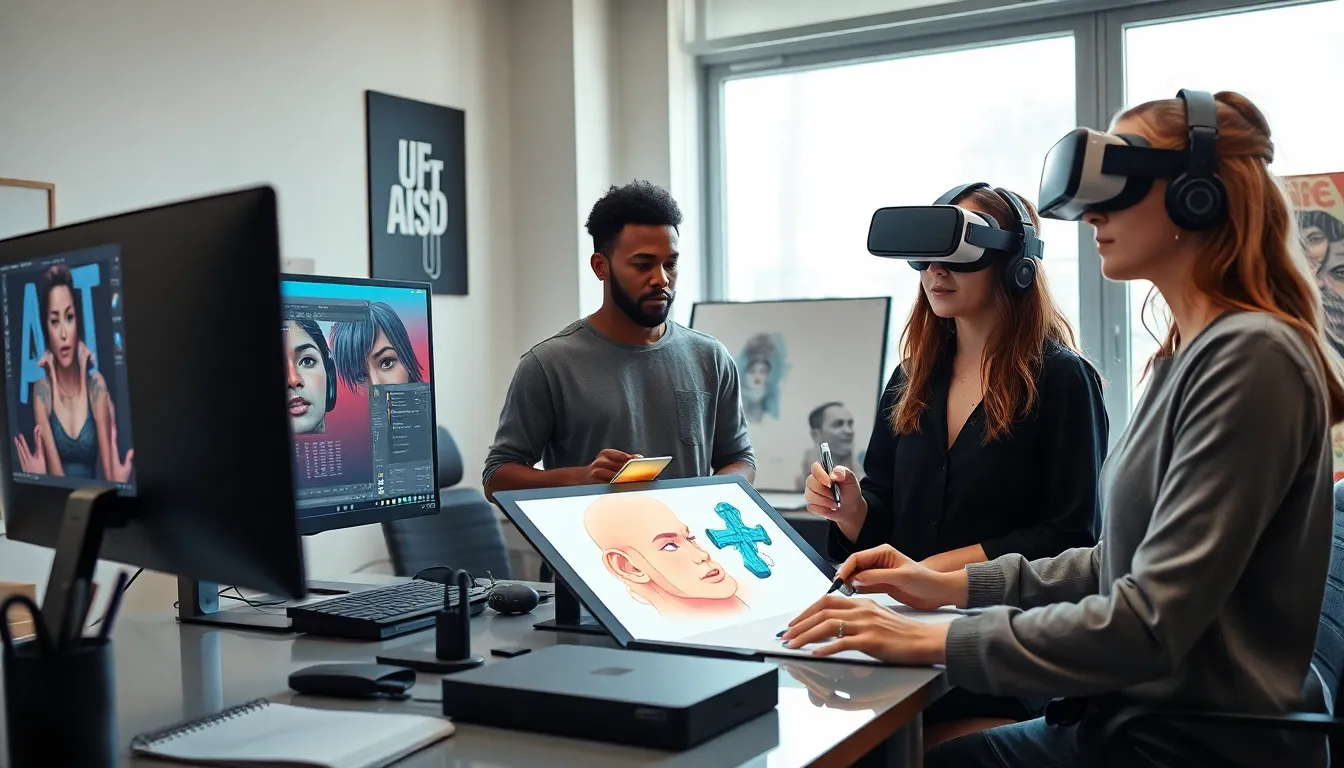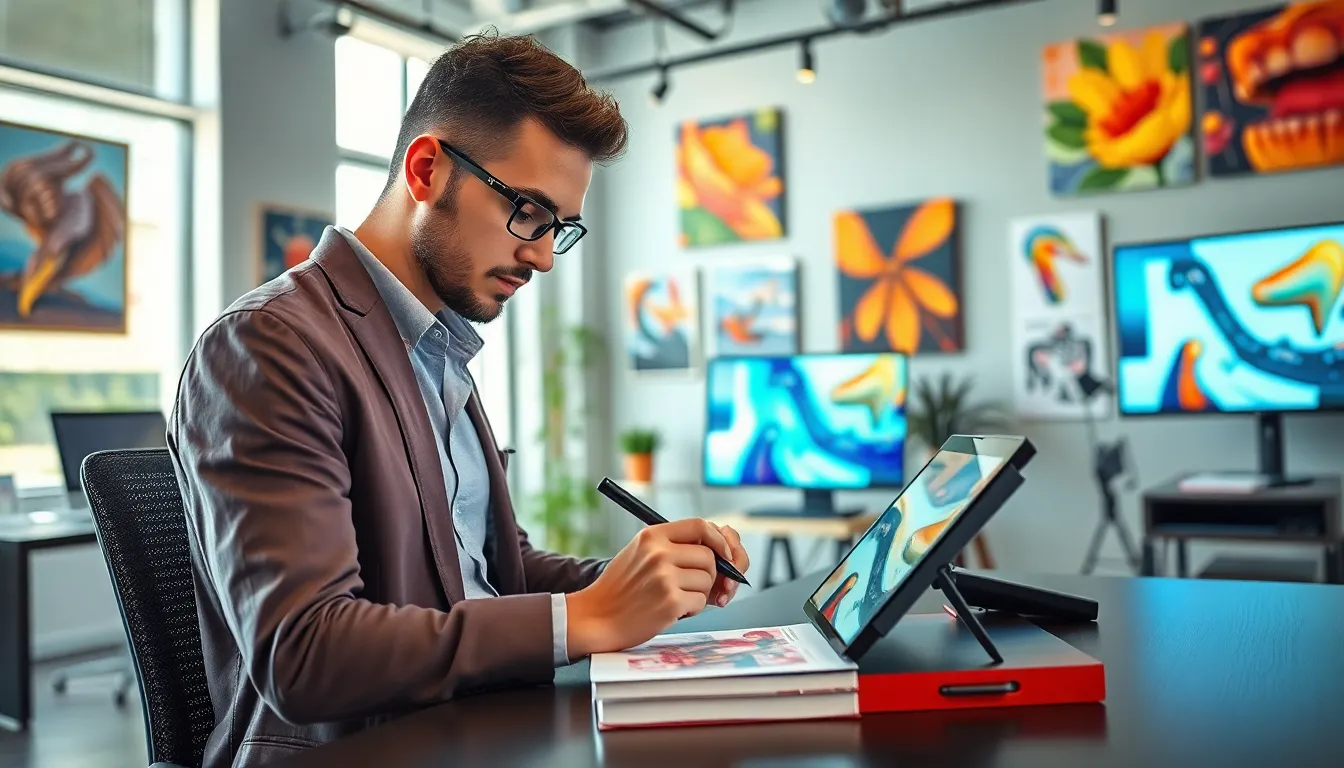Welcome to the wild and wacky world of technology art. Yes, you heard that right, art and technology aren’t just good friends: they’re practically the dynamic duo of the 21st century. Think of it as a love story where pixels flirt with paintbrushes, and creativity merges seamlessly with code. As we jump into this intriguing realm, prepare to discover how digital tools are transforming traditional artistic practices and rewriting the rules of creativity. Buckle up because this is going to be a colorful ride.
Table of Contents
ToggleUnderstanding Technology Art

The Role of Digital Tools in Artistic Creation
Technology art is not only about what is made but how it is made. In recent years, artists have begun to embrace digital tools, revolutionizing their creative processes. From sophisticated software to innovative hardware, these tools are redefining artistry in ways that were once unimaginable.
Imagine an artist sitting in front of a computer, using software like Adobe Creative Suite or Blender to create stunning visuals and 3D models. These technologies make it possible to produce intricate designs, animations, and even immersive experiences without the limitations of traditional mediums. With a simple click, artists can alter colors, tweak elements, or even create entire worlds, showcasing a level of versatility that paints a bold picture of creativity reimagined.
Also, tools like tablets and styluses have turned digital artistry into an accessible medium for many. Artists can sketch on their tablets, manipulating their creations with fluid motions that mirror the gestures of traditional drawing, but with the added benefit of erasing mistakes effortlessly or experimenting with multiple styles in a flash.
Exploring Artistic Genres Within Technology Art
The Concept of Purchase in the Digital Art World
When it comes to technology art, understanding the purchasing landscape can be as complex as the art itself. The digital age has transformed how people buy art. No longer are collectors confined to gallery walls or print shops. With just a few clicks, anyone can acquire a unique piece of digital art.
But what drives this impulse to purchase? It’s no longer just about ownership: it’s about the experience. Many buyers appreciate the story behind the artwork, the technology used, and how it fits into their personal aesthetic. Digital art creates a sense of immediacy, and platforms like Etsy or Saatchi Art have adapted to cater to this urge. Consumers are now seeking more than just a product: they are looking for a connection to the artist and a stake in the emerging trends of digital creativity.
Ebooks and Their Impact on Art Consumption
RedWebZine: A Case Study
Among the various platforms revolutionizing art consumption, RedWebZine stands out. This innovative ebook publisher has embraced the technology art space by inspiring both budding and seasoned artists. Their approach combines stunning visuals with insightful commentary, allowing readers to explore diverse artistic expressions all from their devices.
RedWebZine not only showcases incredible artwork but also serves as a bridge between the artist’s creations and their audience, enhancing the consumption experience. By transforming traditional art books into dynamic, interactive ebooks, it engages readers in a manner reminiscent of flipping pages, but with the benefits of rich multimedia content.
The Evolution of Digital Art Purchases
The digital art purchase landscape has evolved significantly over recent years. Initially, the idea of buying digital art raised eyebrows, is it real art if it exists only on a screen? Yet, now it’s become a vibrant market in its own right. Blockchain technology, particularly with NFTs (non-fungible tokens), has paved the way for artists to sell their digital work while ensuring authenticity. This phenomenon has not only given artists new revenue streams but also redefined ownership in the digital realm.
The Future of Technology Art and Its Market
Challenges and Opportunities in the Digital Art Marketplace
While the future of technology art seems bright, it isn’t without its challenges. The market’s rapid expansion has led to oversaturation. With an influx of new artists, standing out becomes increasingly difficult. Also, valuation remains a hurdle. How do you put a price on a digital image? It’s a question that leaves both buyers and sellers scratching their heads.
But, these challenges also bring opportunities. The appetite for unique digital art continues to grow, and as more tools and platforms emerge, artists can reach broader audiences. Innovations in virtual reality (VR) and augmented reality (AR) are opening new avenues for immersive art experiences, pushing boundaries and inviting interaction like never before. The intersection of technology and art is poised to keep evolving, promising to surprise and inspire us all.





